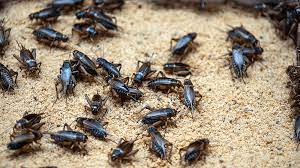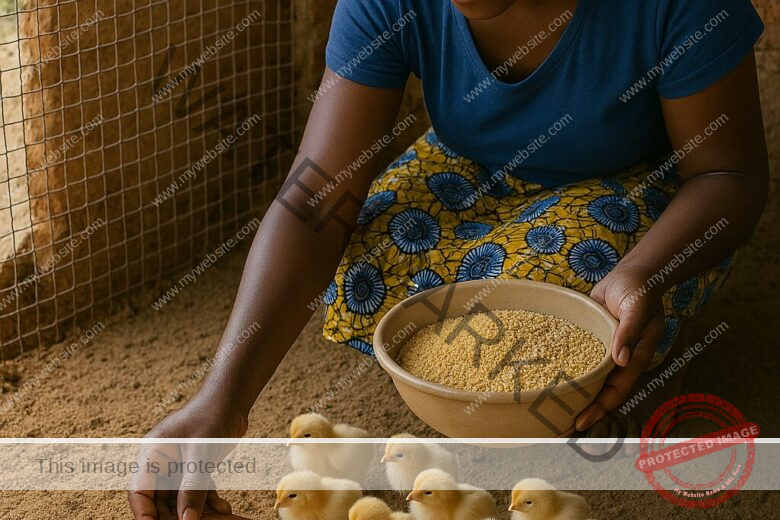Cricket farming is becoming an increasingly popular way to produce sustainable protein and fertilizer in Zambia. With the right knowledge and resources, anyone can start a cricket farm.
Before beginning, it is necessary to do research on the climate, cricket species, and the necessary housing and equipment. Additionally, it is important to understand the full life cycle of the crickets, the best feed options, and the potential challenges to running a successful cricket farm.
That is why this material is compiled to teach how you can start cricket farming in Zambia from beginning to the end.
How To Start Cricket Farming In Zambia
It is important to get it right when establishing a cricket farm in Zam
Step 1: Planning
Cricket farming is a growing industry in many countries, including Zambia. It is a great way to generate income and provide a sustainable source of protein-rich food.
To start a successful cricket farm in Zambia, careful planning is necessary.
Before you begin, it is important to determine the goal of your farm. This can include things like selling cricket-based food products or raising crickets for bait.
Read Also: [Beginners Guide] How To Start Ostrich Farming In Zambia
Once you’ve established the goal of your farm, you can begin to create a business plan.
This should include a budget and a timeline for setting up the farm and achieving your goals.
You should also consider the size of your farm. This will determine the amount of land you will need and the number of crickets you will need to raise.
It is also important to consider any permits or licenses that you may need to legally operate a cricket farm in Zambia.
Read Also: 15 Common Diseases Of Cattle In Africa And How To Treat It
Step 2: Identify a Suitable Location
Once you have determined the goal and size of your cricket farm, it is time to identify a suitable location. A good location should have adequate space for the farm and be close to a water source. It is also important to consider the climate of the area and the availability of labor.
The soil at the farm should be fertile and well-draining. This will ensure that the crickets have enough food and that the farm runs smoothly.
It is also important to consider the proximity to potential customers, as this will determine how easy it will be to sell the crickets and cricket-based products.
Step 3: Construct or Purchase Cricket Farm
Once you have identified a suitable location for your cricket farm, it is time to construct or purchase a cricket farm.
There are several types of cricket houses available, including plastic tunnels, mesh cages, and wooden boxes. The type of house you choose will depend on the size of your farm, the climate, and the number of crickets you plan to raise.
Every form of home has benefits and drawbacks of its own. Plastic tunnels are the most affordable but require more maintenance and are more susceptible to wind and rain.
Mesh cages are more expensive but provide good ventilation and are easy to clean. Wooden boxes are the most expensive but are the most durable.
Step 4: Purchase Equipment and Supplies for Cricket Farming
Once you have chosen the type of cricket house you will be using, it is time to purchase the necessary equipment and supplies.
This includes things like feeders, watering systems, heating and cooling systems, and bedding. You may also need to purchase cages, nets, and other items to keep the crickets safe and secure.
Step 5: Purchase Suitable Crickets Species
The final step in setting up a cricket farm in Zambia is to purchase the right species of crickets.
There are several different species of crickets available, each with its own unique characteristics. Factors to consider when choosing a species include size, lifespan, and heat tolerance.
One of the most common species of crickets to farm in Zambia is the Darkling Beetle. This species is relatively small and has a long lifespan.
It is also relatively heat-tolerant, making it a good choice for Zambian climates. Other suitable species of crickets for Zambia include the House Cricket, the Field Cricket, and the Mole Cricket.
Step 6: Stock and Raise Cricket
When starting a cricket farm, the first step is to stock the farm with crickets. The best way to stock the farm is to purchase a batch of adult crickets from a reputable supplier.
Depending on the size of the farm and the desired yield, the number of crickets you can purchase ranges from a few dozen to several thousand. Once the crickets have been purchased, they should be housed in the appropriate environment.
They should be housed in well-ventilated cages or enclosures. The enclosure should be made of mesh or plastic, and should have a minimum of 2-3 inches of a substrate such as peat moss, sand, or vermiculite.
The enclosure should also have a water source, such as a shallow dish, and food, such as bran mash, fruit and vegetable scraps, or commercial cricket feed.
Once the crickets have been housed and supplied with food and water, they should be monitored for health and growth.
Step 7: Cricket Farming Management
Cricket farming requires active management in order to ensure the health and productivity of the crickets. This includes providing adequate food and water, controlling pests and diseases, protecting against predators, and maintaining good hygiene practices.
Feeding and Watering
Feeding and watering is an important part of cricket farming management. Crickets require a constant supply of food and water, and an unbalanced diet can lead to poor health and growth.
The food and water should be checked and replenished daily, and the cricket feed should be changed as necessary.
Pest, Disease, and Predator Control
Pest and disease control is also an important part of cricket farming management.
Common pests and diseases include mites, parasites, bacterial and fungal infections, and viruses. In the event of an infestation, appropriate treatments should be applied as soon as possible.
The crickets should be checked for signs of disease, such as mites, parasites, or bacterial or fungal infections. In the event of an infection, appropriate treatments should be applied as soon as possible.
In addition to pest and disease control, it is also important to protect crickets against predators, such as birds or rodents. This can be done by covering the enclosure, or by using traps or repellents.
Good Hygiene
Finally, good hygiene practices should be maintained, such as regularly cleaning and disinfecting the enclosure and equipment. This will help to reduce the risk of disease and infestation.
Step 8: Cricket Breeding
Cricket breeding is the process of encouraging crickets to reproduce. It is important to ensure that the right conditions are provided in order to maximize the number of offspring.
The ideal temperature range for breeding crickets is between 77-86 degrees Fahrenheit.
The relative humidity should also be between 50-70%. The enclosure should be made of mesh or plastic, and should have a minimum of 2-3 inches of substrate such as peat moss, sand, or vermiculite. The enclosure should also have a water source, such as a shallow dish.
It is also important to provide an ample supply of food, such as bran mash, fruit and vegetable scraps, or commercial cricket feed. The food should be checked and replenished daily.
It is important to provide shelters for the crickets to hide in, such as logs or rocks. This will help to reduce stress and encourage breeding.
Step 9: Harvest Crickets
Once the crickets have reproduced, it is time to harvest them. The best time to harvest crickets is in the evening when they are most active. Harvesting can be done by hand, or by using a vacuum or net.
Once the crickets have been harvested, they should be separated into males and females. The females can be placed in a separate enclosure or container and allowed to lay eggs. The eggs can then be incubated and the resulting nymphs will be ready to be sold.
The harvested crickets can also be sold fresh, or they can be dried and ground into a powder. The powder can then be used as a protein source in food or feed.
Where to Sell Crickets in Zambia
Crickets are a popular food item in Zambia and can be easily found in many local markets and grocery stores.
Some of the larger cities also have specialty cricket stores that specialize in selling crickets.
Also, people can find crickets for sale online, with many vendors offering delivery services.
Some farmers may also be willing to sell crickets, either directly or through local markets. With so many options, it’s easy to find a reliable source of crickets in Zambia.
The Cost of Establishing a Cricket Farm
Establishing a cricket farm in Zambia can be a costly endeavor. The cost of the land, equipment, and labor can add up quickly.
The cost of feed and other supplies must be taken into consideration. Depending on the size and scope of the farm, these costs can range from a few hundred dollars to a thousand dollars.
Pros of Cricket Farming in Zambia
Cricket farming in Zambia can be a lucrative business, as there is a large demand for crickets. Here are a few of the pros of cricket farming in Zambia:
1. Low Start-Up Costs
Cricket farming requires minimal start-up costs, making it a viable option for entrepreneurs.
2. Low Labor Costs
Labor costs are very low compared to other forms of agriculture, making it an attractive option for farmers.
3. High Demand
As mentioned earlier, there is a high demand for crickets in Zambia.
4. High Return On Investment
The return on investment is high, as crickets can be sold for a good price.
5. Low Environmental Impact
Cricket farming has a low environmental impact, as crickets require minimal resources.
Market and Industries that Demand Cricket in Zambia
The demand for crickets in Zambia is driven by a variety of industries, including the pet trade, food industry, pharmaceutical industry, and research laboratories.
Pet owners often purchase crickets as food for their pets, while the food industry uses crickets as an ingredient in various dishes.
The pharmaceutical industry uses crickets for their anti-inflammatory properties, and research labs use crickets for their studies.
Crickets are becoming increasingly popular in the restaurant industry, as chefs are beginning to use them as an ingredient in unique dishes.
Challenges of Cricket Farming in Zambia
Cricket farming in Zambia can be a rewarding endeavor, but there are also a few challenges that need to be taken into consideration.
Here are five of the biggest challenges of cricket farming in
1. Limited Resources
Cricket farming requires land, equipment, and labor, all of which can be difficult to come by in Zambia.
2. Pest And Disease Control
Crickets are prone to pests and diseases, which can be difficult to control.
3. Weather Conditions
Zambia’s climate can be unpredictable and extreme, which can be difficult for cricket farmers to manage.
4. Lack Of Infrastructure
There is a lack of infrastructure in Zambia, which can make it difficult to transport crickets to markets.
5. Lack of Knowledge
Cricket farming is a relatively new industry in Zambia, so there is a lack of knowledge and experience in the industry.
How To Start A Cricket Business
Starting a cricket business may seem like a daunting task but with the right equipment, knowledge and dedication, you can succeed.
The first step is to research and consider the business model that would work best for you. Options include selling crickets as a pet, running a cricket farm, or selling cricket-related products.
Once you have decided on the business model, you need to get the necessary equipment. For example, if you plan to run a cricket farm, you will need to purchase cricket farming equipment such as cricket pens, cricket tanks, cricket feeders, and other supplies.
You may need to purchase a cricket farming kit, which will contain all the necessary items for breeding and raising crickets, such as cricket food, cricket bedding, and cricket cages.
Next, you will need to create an appropriate habitat for the crickets. This may involve building a sheltered outdoor space that is well-ventilated and has adequate drainage. You will also need to provide the crickets with a steady supply of food and water.
Finally, you may want to consider breeding banded crickets. This is a relatively new and exciting way to breed crickets and can be very profitable.
You will need to research the best methods for breeding banded crickets and purchase the necessary equipment.
Cricket Farming Equipment
Cricket farming equipment is essential for successful cricket production. This includes things such as cricket cages, feeders, and other supplies.
Cricket cages should be designed to allow for adequate ventilation and be large enough to accommodate the size of the cricket colony.
Feeders should be designed to provide a steady supply of nutritious food for the crickets. Other supplies such as cricket houses, breeding trays, and feed supplements may also be necessary.
Cricket Farming Kit
Cricket farming kits are also available to help make cricket production easier. These kits usually include cages, feeders, and other supplies. They are designed to provide an easy-to-use, comprehensive solution to cricket production.
How To Make Cricket Habitat
When making a cricket habitat, it is important to provide adequate space for the crickets to move around.
This will provide them with ample opportunity to forage for food and exercise. A variety of substrates, such as sand, peat, and sawdust, can be used to create a suitable habitat for the crickets.
Banded Cricket Breeding
Banded cricket breeding is a specialized form of cricket production. It involves keeping two or more different species of crickets in the same cage, which allows for easier breeding.
This type of breeding requires special care, such as providing separate, dedicated breeding trays for each species. It is important to provide a steady supply of nutritious food for the crickets to ensure healthy breeding.
Conclusion
In order to start cricket farming in Zambia, you must ensure you have acquired the right knowledge and tools to successfully establish and run the venture. Because with the right support and investments, and appropriate infrastructure and support must be established, cricket farming activities can be effectively undertaken in Zambia.




